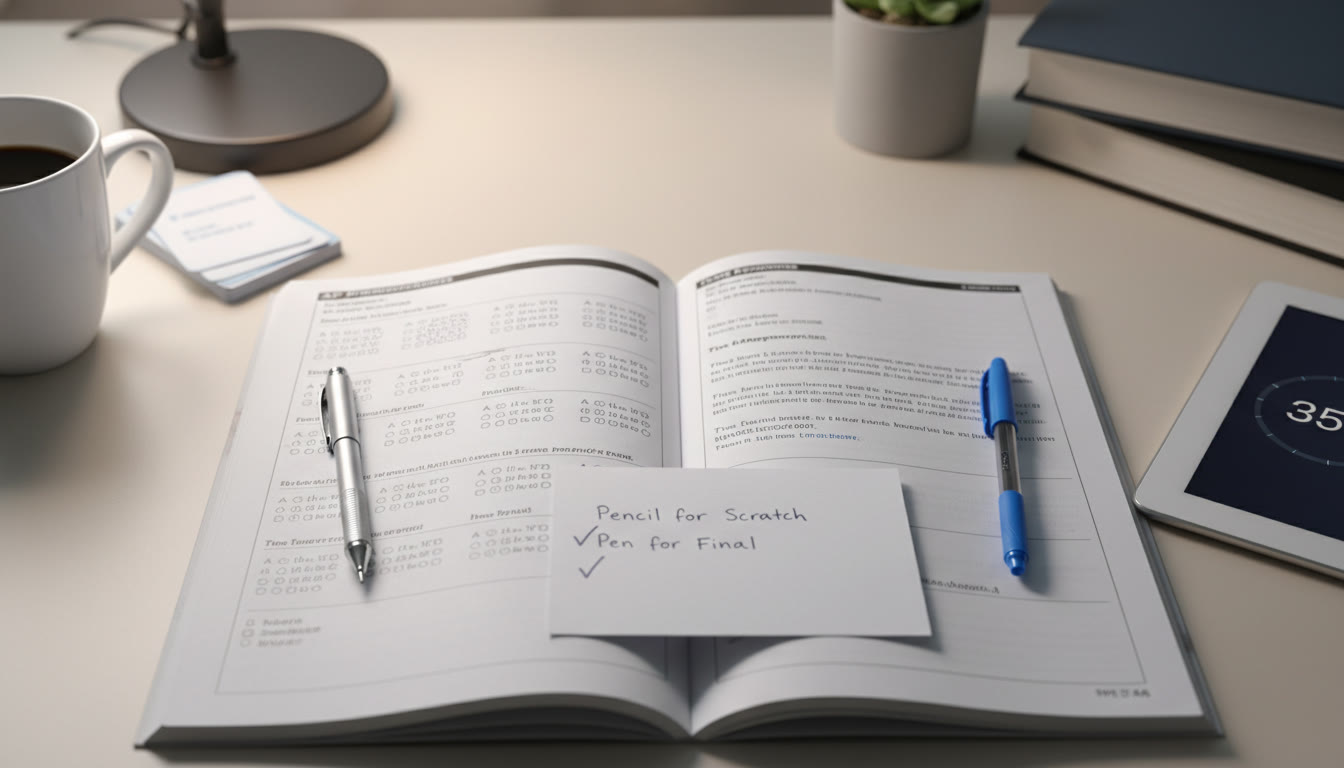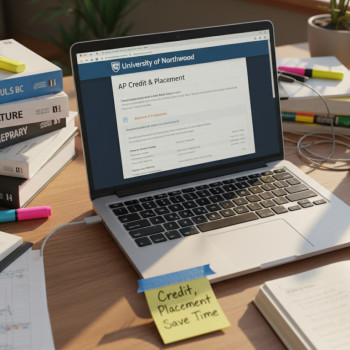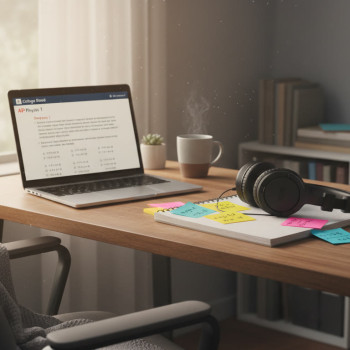The small choice that can make a big difference
When you’re sitting in an AP exam room, every little decision feels amplified. Should you use a pen or a pencil? Does it matter if your handwriting is a little messy? Could a sharper No. 2 pencil or a smooth gel pen actually change your score? These questions are more than nitpicking — they’re practical details that affect clarity, speed, and confidence on test day.
In this article we’ll unpack what research and testing policy say about pens and pencils, how legibility influences graders’ ability to read and score your responses, and practical, evidence-informed strategies you can use as an AP student to make your handwriting work for you — not against you. Along the way we’ll also point out where targeted support, like Sparkl’s personalized tutoring, can help you build a plan that fits your writing style and exam format.

Why readability matters on AP exams
AP free-response sections ask you to communicate ideas clearly and concisely. The graders are human and must decipher what you’ve written to award points. If handwriting is illegible, a correct idea can be missed or misunderstood — and that can mean lost points. This is why readability is a practical skill: it’s not about perfect calligraphy, it’s about ensuring your thinking reaches the reader with minimal friction.
College Board policies also set expectations for tools you bring: for many AP exams you’re asked to bring No. 2 pencils and/or pens with black or dark blue ink. Digital exams have specific rules for devices and styluses, and certain electronic writing instruments are prohibited. These rules influence your available choices and should be part of your planning. ([apstudents.collegeboard.org]( vs Pencil: The practical differences
Let’s compare the two most common options with an eye toward readability, control, and exam logistics.
Pencil — advantages and drawbacks
- Advantages: No. 2 pencils are standard for paper-based sections and multiple-choice sheets; they allow erasing and fine shading; mechanical pencils provide consistent line width for small handwriting.
- Drawbacks: Smudging can occur (especially with softer graphite), writing can look lighter depending on pressure and lead quality, and small or faint writing may be harder to read from a distance.
Pen — advantages and drawbacks
- Advantages: Dark ink (black or dark blue) creates high contrast that’s easy to read; gel and rollerball pens can produce smooth, continuous strokes that help with writing speed and flow.
- Drawbacks: Mistakes are harder to remove neatly; uneven ink flow or blobs can obscure letters; certain pens (very fine tips) may look faint or scratchy if you press lightly.
How grading practices interact with readability
AP free-response graders follow rubrics and look for specific evidence in responses. If a point requires a clear statement or a labeled diagram, unclear handwriting or ambiguous labeling can obscure whether you met the rubric criterion. The graders can only reward what they can read and interpret; they do not guess. This makes legibility a form of protection for your knowledge — clearer writing helps ensure you receive full credit for what you know.
For exams that use a paper free-response booklet (hybrid formats or older paper-and-pencil formats), bring the recommended writing tools (usually 2 No. 2 pencils or 2 pens with black or dark blue ink). For fully digital exams, follow the specified device and accessory rules, and remember that stylus pens or smart pens may be restricted unless explicitly allowed. Always check the current exam instructions the year you test to avoid surprises. ([apstudents.collegeboard.org]( handwriting: habits that help
Improving legibility doesn’t require calligraphy lessons. A few smart habits change how easily graders can interpret your answers.
- Write with purpose: If a short answer needs a labeled list or steps, format it clearly with numbered lines or bullet-like spacing.
- Slow when it matters: Rapid scribbles may be faster but cost clarity. Spend an extra second on topic sentences and labels.
- Use white space: Leave room between distinct parts of your answer — a clear separation between calculation and explanation helps the grader follow your logic.
- Label diagrams and graphs: Even a neatly drawn bracket with a clear label can win points if the rubric asks for it.
- Practice with the actual tools: If you plan to write in pen, practice the same type and ink; if pencil, use the same lead hardness or mechanical size.
When to choose pencil and when to choose pen
Your choice should match the exam format, the task’s nature, and your personal writing strengths.
- Multiple-choice answer sheets: Use No. 2 pencils as required for optical scanning unless rules specify otherwise.
- Calculations with rough work: Pencils can be forgiving for step-by-step calculations and are easy to adjust or erase.
- Final structured answers or essays: Pens with dark ink can provide permanence and contrast that make final statements stand out.
- Fast writers who want fewer interruptions: Smooth gel pens can increase speed without sacrificing line darkness.
Whenever a rule from the exam instructions contradicts your preference, follow the official requirement. Also, consider hybrid strategies: use pencil for scratch work and a pen for the polished answer or vice versa — whatever keeps your final submission as readable as possible.
Practical drills and exercises to improve readability
Improving handwriting for AP tests is about deliberate practice. Here are focused drills you can do in short daily sessions that yield measurable improvement over a few weeks.
- Task-based practice: Recreate typical AP responses — a timed 15-minute free-response, a graph with labeled axes, or a short essay paragraph — using your chosen tools.
- Contrast training: Write the same paragraph with pencil and pen and photograph (or scan) both at the same scale. Compare which is easier to read at a glance.
- Micro-letter drills: Spend five minutes on letter shapes that slow you down (e.g., g, y, f, r). Repeat with the same tool to develop consistent motions.
- Spacing practice: On a page, mark columns to guide consistent word spacing and line height, then practice keeping your writing inside those margins.
- Simulate exam conditions: Do at least one full practice exam with the exact tools and under timed conditions. End-of-session reflection on what was illegible will guide your next practice steps.
Table: Side-by-side quick comparison
| Feature | Pencil | Pen (Black/Dark Blue) |
|---|---|---|
| Contrast | Moderate (depends on lead and pressure) | High (dark ink increases legibility) |
| Correcting mistakes | Easy (eraser) | Hard (corrections visible unless neatly crossed out) |
| Speed | Variable (mechanical pencils are consistent) | Often faster (smooth ink flow helps) |
| Smudging | Possible (especially softer graphite) | Possible (wet ink can smear briefly) |
| Official exam allowances | Required for some answer sheets; commonly allowed. | Allowed (black/dark blue) for many free-response answers; check exam rules. |
Special considerations: diagrams, graphs, and math notation
Complex visual work raises unique readability challenges. For graphs and diagrams, clarity of labels and neat lines matter more than the tool used. Consider these targeted tips:
- Use a pencil for precise graph lines when you need to erase or adjust; switch to pen for final labels to ensure they stand out.
- When labeling axes or parts, write labels horizontally and close to the object they reference to avoid ambiguity.
- For small symbols or subscripts, use a finer tip mechanical pencil or a fine-point pen — whichever you can write with consistently legible pressure.
How test-day logistics affect your choice
AP guidelines make certain items required and other items prohibited. For example, paper-based exams commonly require No. 2 pencils for the multiple-choice bubbles, and many AP exam policies remind students to bring extra pencils and pens. Fully digital or hybrid exams have distinct rules about devices and electronic writing tools. Because policies are updated periodically, double-check the current exam instructions well before test day so your planned tools are allowed. ([apstudents.collegeboard.org]( legibility is a challenge due to learning differences
Some students have documented disabilities that affect handwriting. The College Board provides accommodations — such as permission to type, use of scribes or extended time — through the Services for Students with Disabilities (SSD) process. If handwriting consistently blocks you from demonstrating what you know, work with your school’s SSD coordinator to explore approved accommodations. These exist to level the playing field so your understanding — not your handwriting — is what the grader sees. ([apstudents.collegeboard.org]( examples: small changes, big results
Imagine two students taking the AP Chemistry free-response section. Student A writes quickly with a soft pencil. Their calculations are correct, but half the significant figures are crowded and smudged; the grader hesitates when interpreting units and significant digits. Student B writes the same content using a dark gel pen for final answers and a mechanical pencil for scratch work, labels units clearly, and leaves a small space between each calculation step. The grader reads Student B’s work faster and awards points confidently. The difference wasn’t raw knowledge — it was presentation.
Another common scenario: a student habitually overwrites corrections in pen, creating visual clutter. Switching to a pencil for initial drafts, then transcribing clean final answers into pen, preserves speed while producing a readable final product.
How to choose the right tool for you — a quick decision checklist
- Check the exam format and official tool rules for the year you’ll test. (Follow official instructions if they differ from your preference.) ([apstudents.collegeboard.org](
- Try both tools under timed practice conditions and compare how readable your answers appear to someone else.
- Balance the need to erase (pencil) with the desire for contrast (pen).
- For mixed tasks, consider a hybrid approach: pencil for calculations or diagrams; pen for final textual answers.
- If handwriting is a persistent issue, explore accommodations through SSD early.
How tutoring and targeted practice accelerate improvement
Handwriting clarity is a skill like any other: focused, personalized practice yields faster improvement than vague effort. That’s where targeted tutoring can make a huge difference. Sparkl’s personalized tutoring options — including 1-on-1 guidance, tailored study plans, and expert tutors who can integrate AI-driven insights into practice sessions — help students diagnose specific trouble spots (e.g., small-letter legibility, labeling diagrams, or efficient layout) and build a realistic practice schedule that fits with subject prep. Sparkl tutors can set up practice exams with the exact tools you’ll use and give actionable feedback that’s directly tied to AP rubrics and scoring tendencies.
Quick checklist: exam day handwriting readiness
- Pack the required tools (check current College Board instructions for the exam format). ([apstudents.collegeboard.org](
- Bring backups — extra No. 2 pencils and extra pens with black or dark blue ink — in case of breakage or drying ink.
- Do a warm-up: 3–5 minutes of writing to settle your hand and gauge pressure.
- Use spacing and labels intentionally; if you need to cross out, do so cleanly and consider rewriting key statements.
- If allowed and appropriate, use pencil for draft calculations and pen for final responses.
Final thoughts: clarity as an exam strategy
Choosing pen or pencil is less about a universal “best” tool and more about choosing the right tool for the task — and training yourself to use it well. Legibility protects your knowledge, makes graders’ jobs easier, and reduces the friction that can turn a correct idea into an ambiguous answer. By practicing with the exact instruments you’ll use on test day, simulating conditions, and focusing on formatting and labeling, you can turn small changes into meaningful score improvements.
If you want focused help turning handwriting improvement into measurable gains, consider working with a tutor who will build a study plan around both content mastery and presentation. Sparkl’s personalized approach — one-on-one sessions, tailored study plans, and expert feedback — can help you create reliable habits so that your handwriting supports your strongest work when it matters most.

Appendix: Recommended practice timeline (6 weeks)
Below is a practical six-week plan you can adapt. It combines content practice with focused handwriting drills so both your ideas and your presentation improve together.
- Weeks 1–2: Baseline. Complete a timed free-response under exam conditions with your preferred tool. Photograph the result and note illegible areas. Start 10 minutes/day of letter-shape drills.
- Weeks 3–4: Hybrid practice. Alternate pencil and pen in practice sessions; use pencil for math scratch and pen for final text. Introduce diagram labeling drills and spacing exercises.
- Week 5: Simulate. Do two full practice exams with the exact tools planned for test day. Review with a tutor or peer for readability feedback.
- Week 6: Polish. Focus on timing, neat final copies, and warm-up routines to use immediately before the exam.
Last piece of advice
Make readability part of your study routine, not an afterthought. The clarity of your handwriting is a practical lever you can control amid many uncertainties on test day. With deliberate practice, the right tools, and targeted feedback, you’ll turn what might feel like a minor choice — pen vs pencil — into a dependable advantage when it counts.
Good luck. Write clearly, answer confidently, and let your knowledge shine through.



















No Comments
Leave a comment Cancel